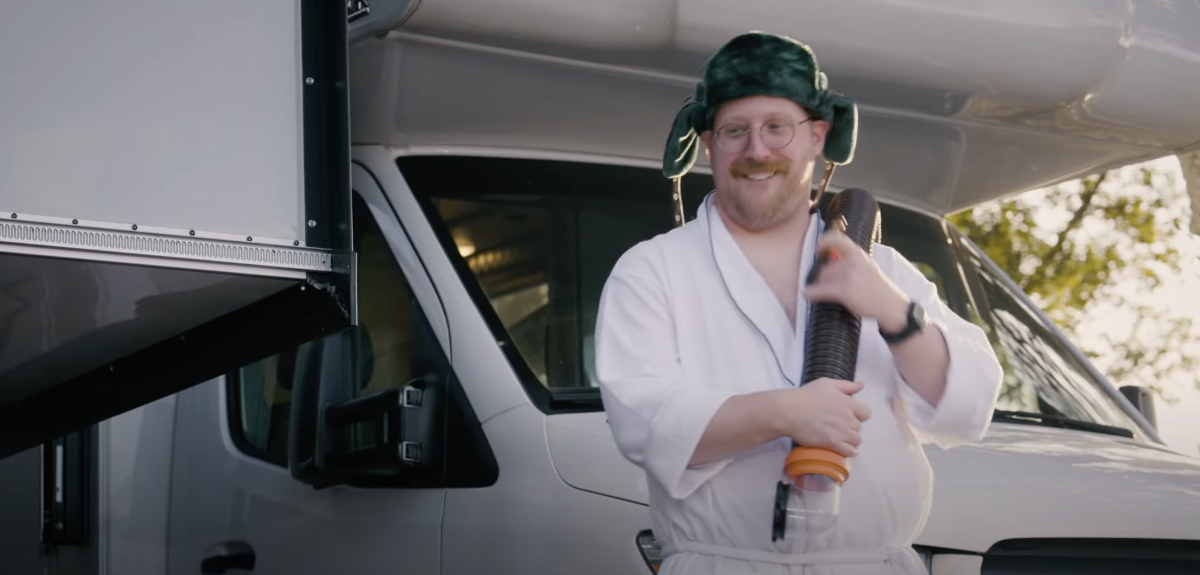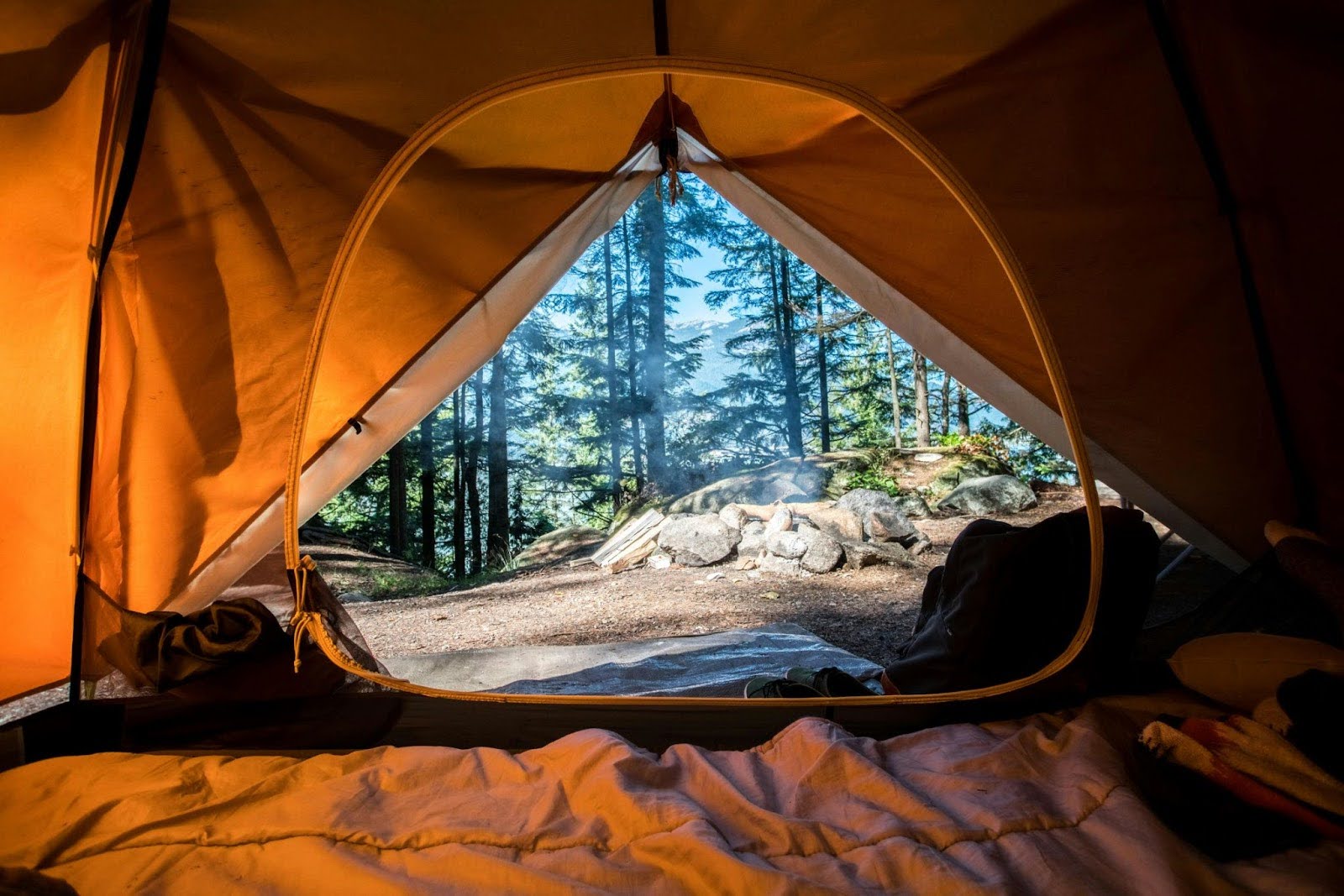RVing for Skiers: Where and How to Set Up a Winter Basecamp
Tips for Skiers Looking to Settle in for Winter Adventures.
Image Caption: Photo Credit: winyoo08/Getty
Once the cold weather hits, there are two types of RVers: the snowbirds who head south and the skiers who head north. When the fresh powder starts to fly, there is usually a bum rush to the best skiing locations so everyone can get as much time on the slopes as possible. But coming and going from your favorite hill–especially when things are packed–just isn’t practical. You’re far better off setting up an RV winter basecamp to operate from all season long.
Historically, ski basecamps have ranged from small log huts to heavy canvas tents that are sometimes equipped with wood-burning stoves to keep everyone warm. But this is the 21st century, and there are plenty of other options for the modern ski bum. Namely, using an RV as your winter basecamp instead.
If you’re new to the idea of long-term ski trips and posting up for lengthy periods of time in a snow-covered area, we’ve put together a basic how-to guide to help you out. We’ll show you where to go and exactly how to set up a winter basecamp and RV camp comfortably for all of your skiing adventures.
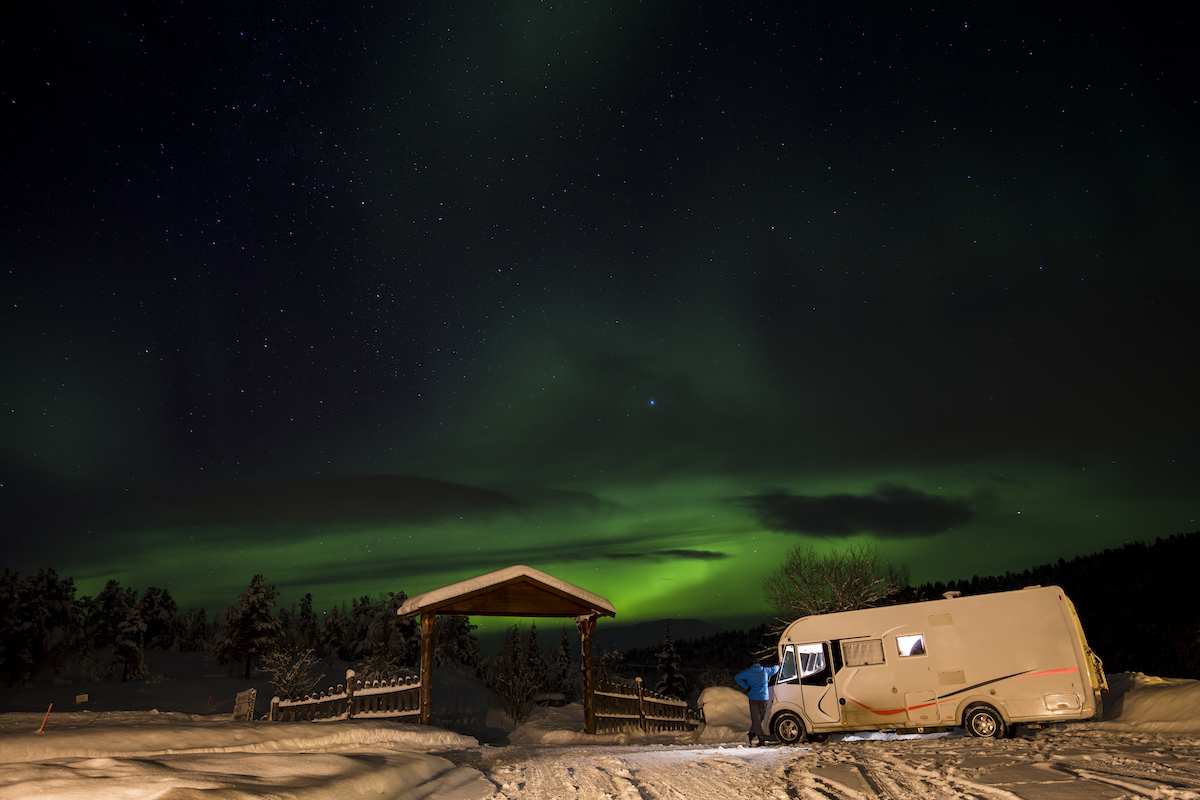
Photo Credit: Mampfred/Getty
Where to Set Up an RV Winter Ski Basecamp
In large part, where you go is completely up to you—within reason of course. Once you’ve decided on a location where you want to spend some time during the winter, you’re basically ready to set up camp. There are a few things to keep in mind, however.
First, you will want to make sure you’re staying at an established campsite that is open for the season or on public land. The Bureau of Land Management allows you to camp and boondock on nearly any piece of public land available. These areas are often perfect for cross country skiing and snowshoeing, so these activities go perfectly together.
If you’re not camping on public land, always get permission before stepping foot on private property—and don’t even think about camping without permission. Those stories rarely end well.
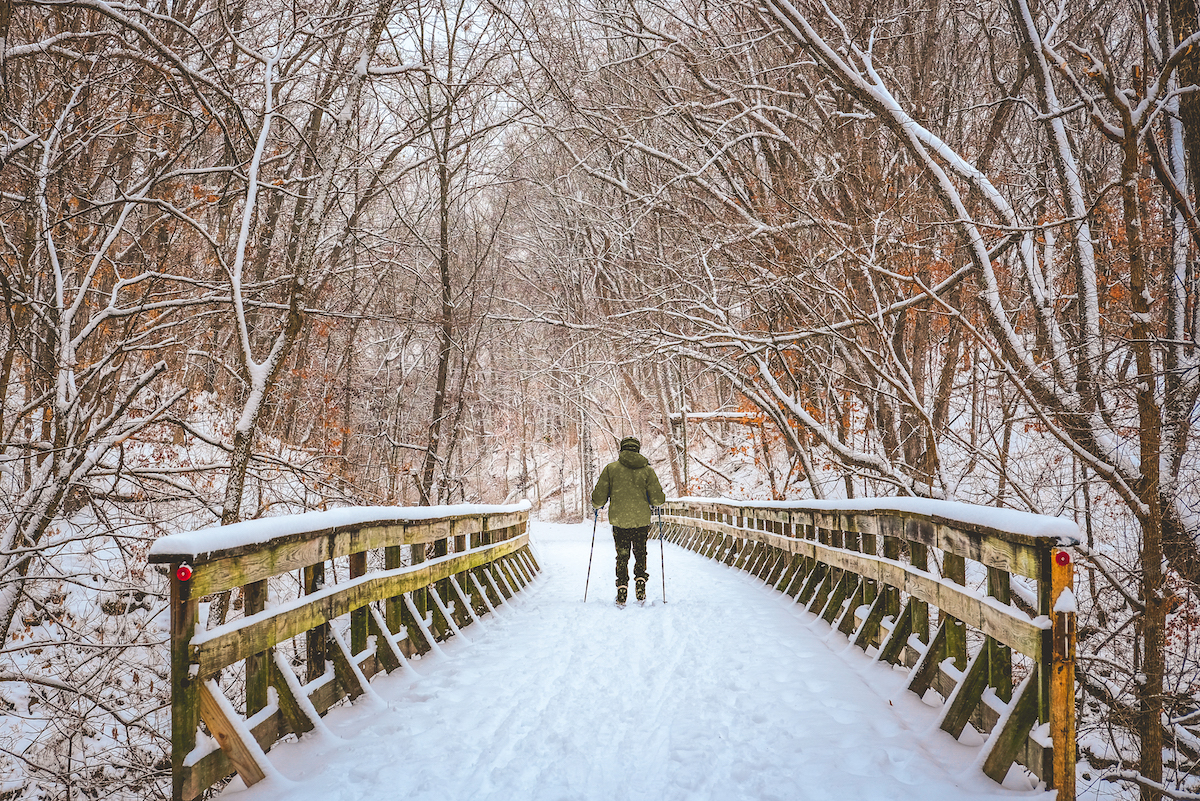
Photo Credit: Lana2011/Getty
Also, be considerate of other people. As mentioned above, people like to flock to popular areas during the winter to take advantage of all the outdoor recreational opportunities. This, for better or worse, includes places that normally seem “out of the way.”
You may find other groups flocking to your favorite locations and setting up camp. There’s nothing wrong with co-camping, especially if you’re friendly and like people. But for many, solitude—at least within your group—is a big part of winter camping and activities. If you’re not prepared to share your space with other people, you may have to search for a different location.
When selecting a spot to set up an RV winter basecamp, you’re looking for a fairly flat, accessible area. We’ll cover this more below, but you have to make sure your RV (and tow vehicle, if applicable) are able to safely get to the spot—and get back out when the time comes. A flat area makes a basecamp so much easier to set up. While you’ll still need to clear snow, a good flat space gives you more to work with than when camping on an incline.
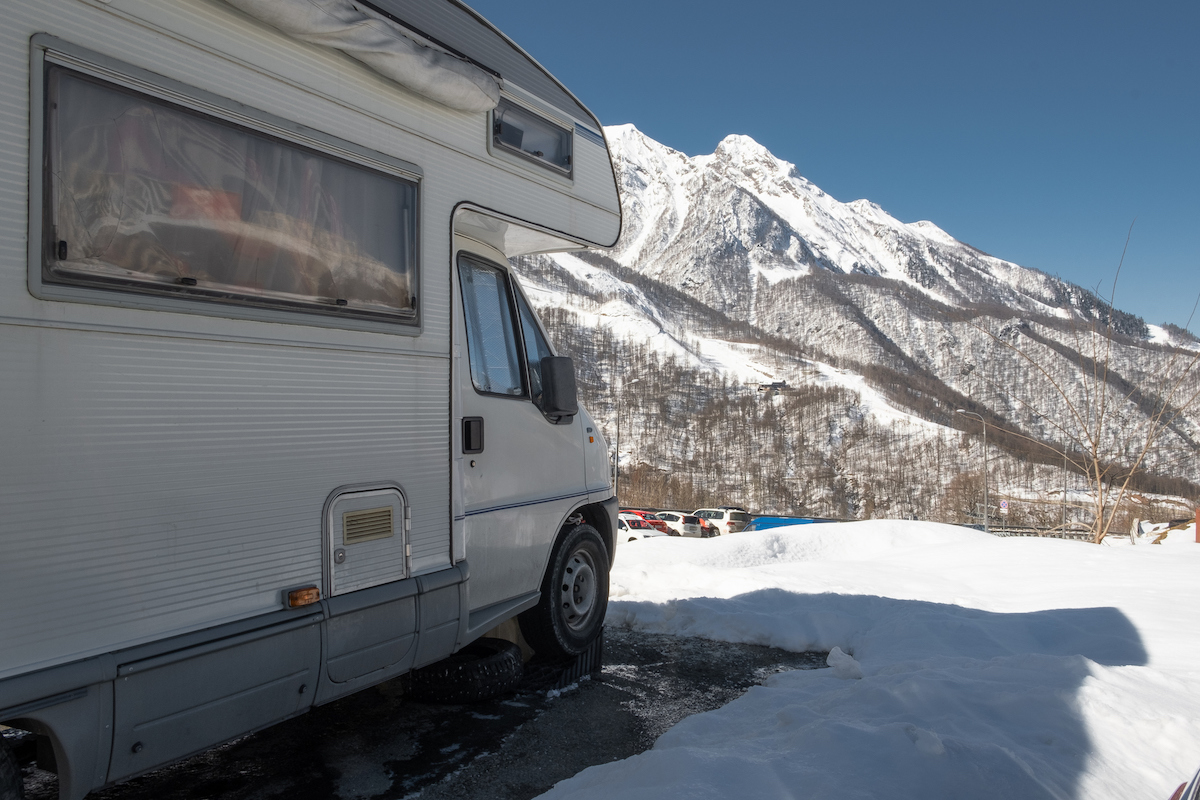
Photo Credit: Ivan Vislov/Getty
How to Set Up a Ski Basecamp in an RV
If you’ve ever established a basecamp while tent camping, you know that the setup is the majority of the work. You have to clear the space of existing snow, lay down a weather blanket and tarps, erect the tent, get everything inside set up, get the fire going, and get settled in.
With an RV, it’s still advisable to clear a space larger than the rig. It is important that you inspect the campsite before getting settled, looking for things hidden under the snow or overhanging tree limbs that could come down in a storm. After that, all you need to do is chock, level, and do basic RV setup.
If you intend to stay in one place for an extended period of time, you may consider installing an RV skirt. Adding a skirt will protect the underside of your vehicle and help keep it warmer inside the cabin too. By preventing cold winds from blowing unabated beneath your motorhome, a skirt prevents pipes and tanks from freezing up, while also trapping warm air inside. As a result, you’ll burn less fuel and stay cozier between outdoor adventures.
Additionally, you may prefer to have a covered “porch” area just outside your door, especially if you’re in a relatively small travel trailer. This area—created by an awning or canopy— gives you room to take off some of your wet gear before stepping into the RV, helping to keep things dry and clean inside. Plus, having a little extra space in an otherwise-crowded RV is never a bad thing. The porch is even a nice place to leave your skis. and you can keep your generator there for easy access, keeping it out of harm’s way should the weather take a turn for the worse. Just don’t forget to clean the snow off the canopy from time to time.
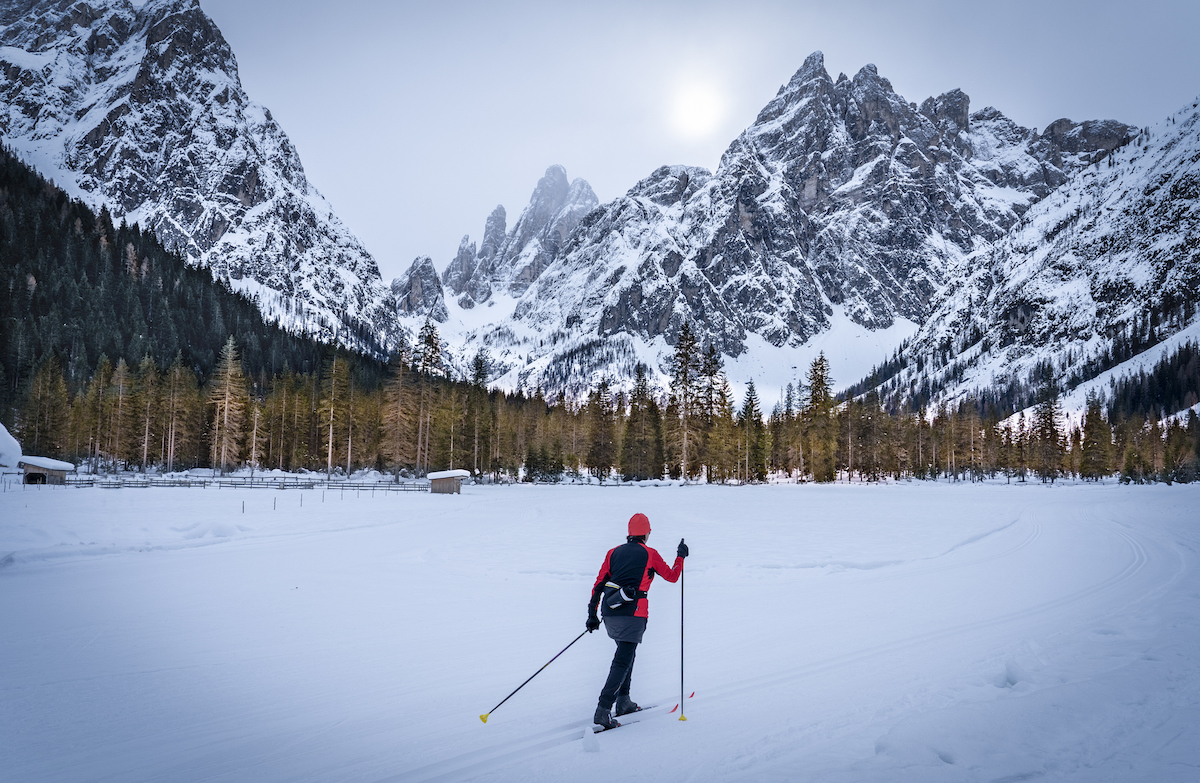
Photo Credit: Uwe Moser/Getty
Gear to Consider for a Ski Basecamp
No matter how you’re setting up an RV winter sports basecamp, there are a few basic pieces of equipment that are always handy to have around.
Snow Shovel – Immeasurably valuable for getting snow out of the way to set up the RV or tent, plus to help get it back out.
Tarp – When snow starts to pile up, some like to throw a tarp over the RV’s roof to help it slip right off—assuming you don’t have anything mounted to the top.
Canopy/Shelter – This is perfect for the porch area mentioned above.
Axe – If want to build a nice roaring fire to enjoy outdoors, you’ll want an axe to help cut firewood.
Generator – Your RV may include one, but having a backup generator in cold and snowy conditions is always a good idea.


